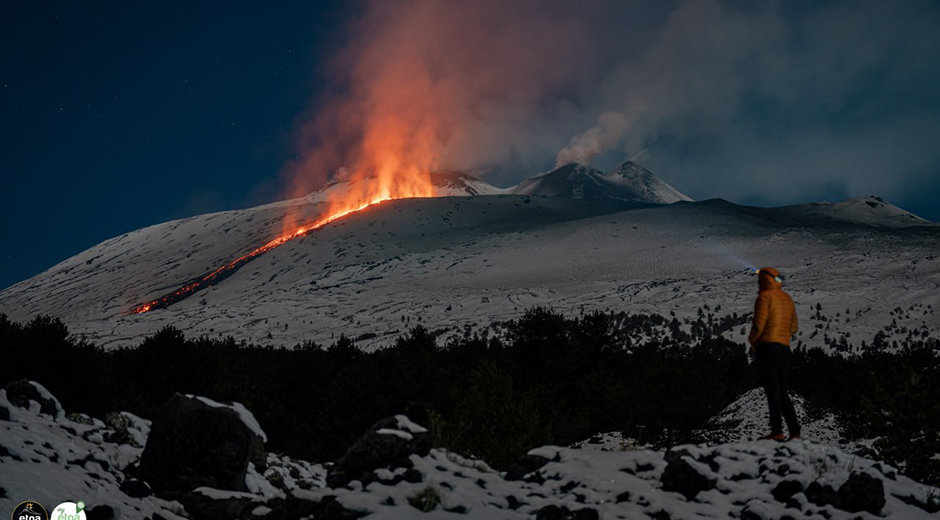
Italy, Feb 12. - Located on the Italian island of Sicily, the Etna volcano continued to expel lava on Monday through a fissure on the southern slope of the crater called Bocca Nuova, which contrasts with the snow around the formation.
The National Institute of Geophysics and Volcanology of Catania located the lava emission at an estimated altitude of almost 3,000 m above sea level, between the base of the Bocca Nuova crater and the southeast crater.
According to the observatory of the National Institute of Geophysics and Volcanology of Italy, no particular changes have been recorded in the parameters of the volcano.
The volcanologists wanted to reassure the Sicilians by assuring that the current eruption is of the subterminal type, since it comes from a fracture and not from one of the main craters.
According to the volcanologists, the current eruption is a typical subterminal eruption, since it comes from a fracture and not from one of the main craters. The 3,330 m volcano is the highest in Europe and is believed to have the longest documented history of eruptions among all volcanoes, with records dating back to 425 BC.
According to data from the European Space Agency (ESA), Mount Etna is the largest volcano in Europe. It has a volume of at least 350 km3 and is one of the most active (i.e. productive in eruptions) volcanoes on Earth.
Etna has an altitude of about 3,330 meters, varying by a few tens of meters depending on its activity, and is surrounded by populated areas. The city of Catania is located south of the volcano.
The lower part of the continental volcano has a base of about 60 x 40 kilometers and a height of about 2,900 m. It is a shield volcano. The upper part is a stratovolcano.
The composition of Etna's lava is similar to alkaline basalt and trachybasalt, which means that the lava is basic, with a low Si2O3 content. Volcanoes that produce this type of lava are not very explosive. (Text and Photo: Cubadebate)